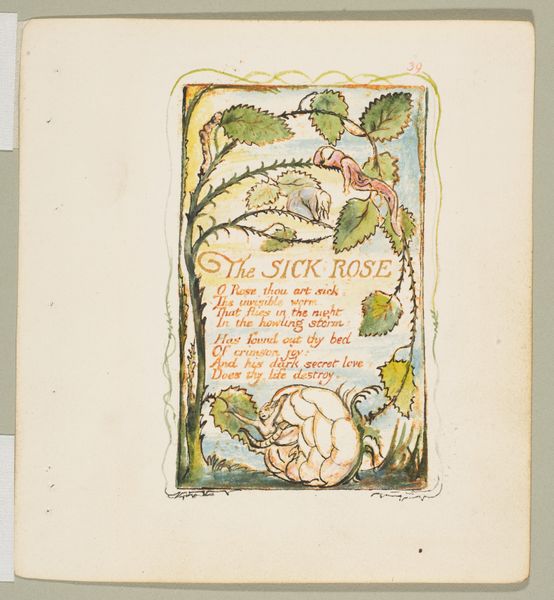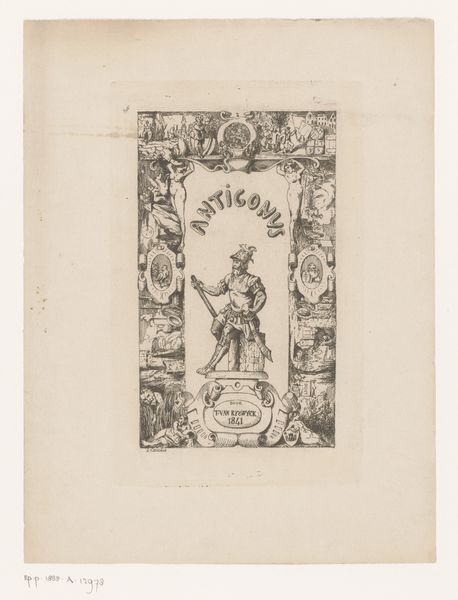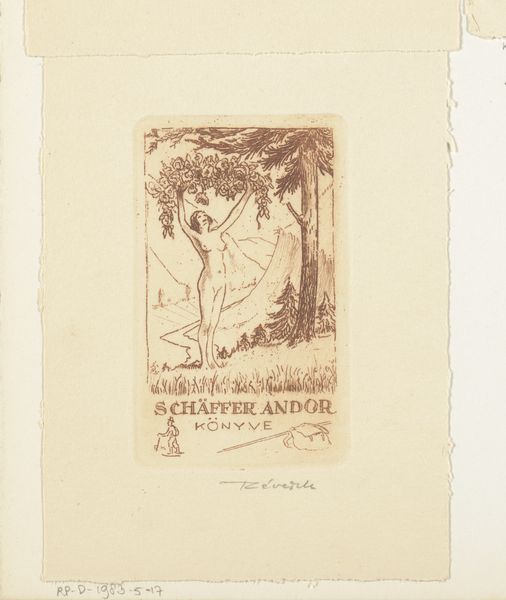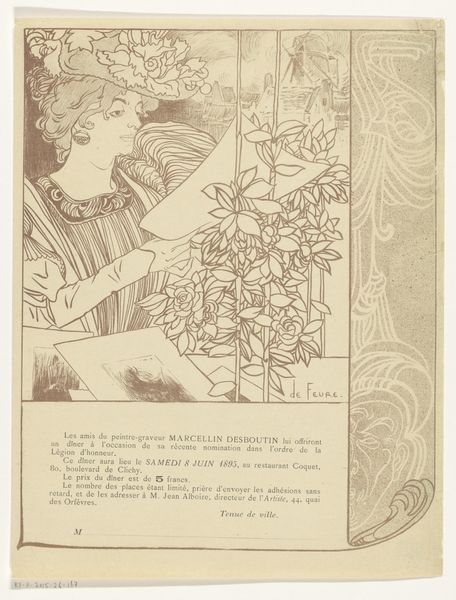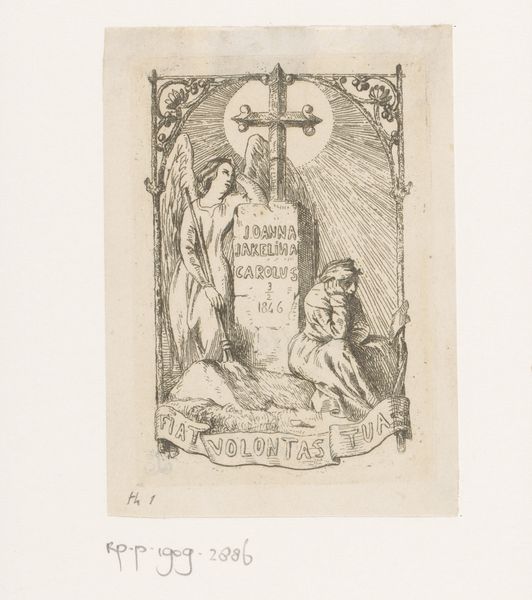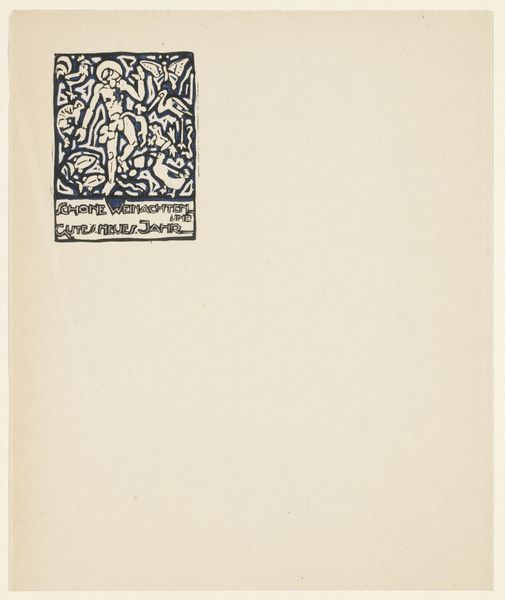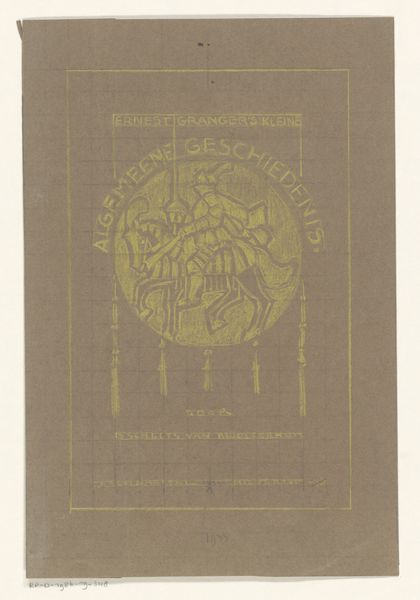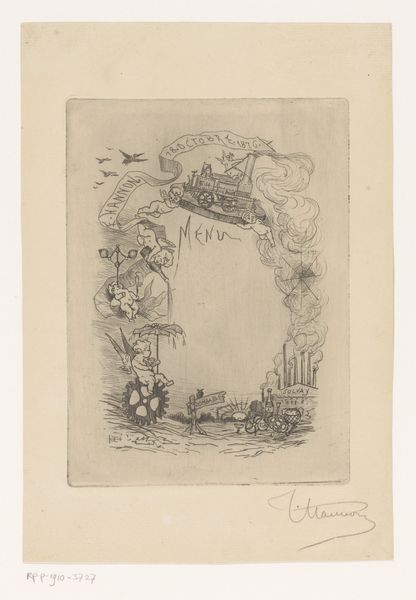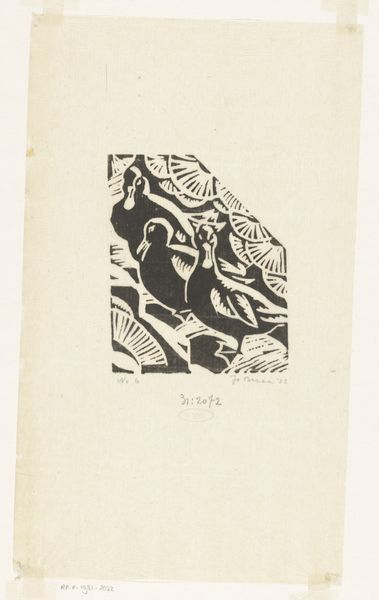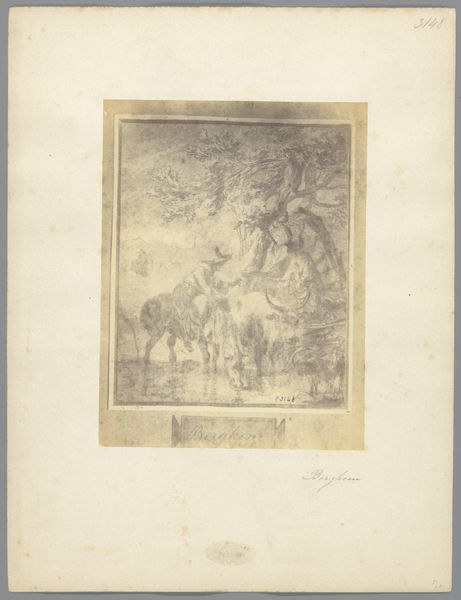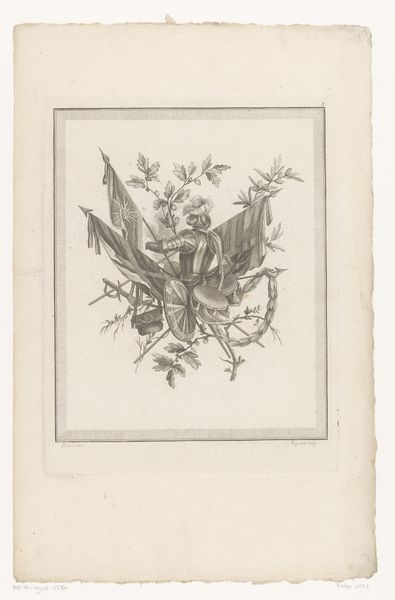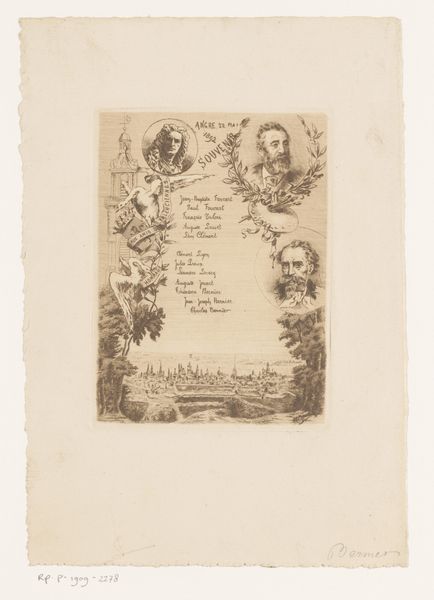
print, woodcut
#
tree
# print
#
geometric
#
woodcut
#
line
Dimensions: height 115 mm, width 70 mm, height 162 mm, width 115 mm
Copyright: Rijks Museum: Open Domain
Curator: Look at the density of lines! Ernőné Déry created this woodcut in 1934. It's titled "New Year's Wish." Editor: There's such an intricate, almost fairytale-like quality to the composition, yet something also feels unsettling about the crowding in this tiny space. Curator: The New Year's message inscribed wishes that the "new shoots may bring forth more beautiful flowers, more fruit". Let’s explore that optimism through the lens of its historical setting. Think about interwar Hungary: How might these wishes resonate against the socio-political backdrop of the time? Editor: I find myself reading against that very optimism given what we know. Was this artist part of any artistic movements of the time? Where did Ernőné Déry exhibit and how did her work, generally, receive wider visibility or recognition? The choice of a somewhat laborious, slow process for a new year greeting speaks to a time far removed from digital messaging, reflecting potentially different socio-economic strata of communication, I’d argue. Curator: Her works were part of several group exhibitions in the late 1920s and early 30s, largely shown in Budapest. We have this print as part of a wider holding acquired relating to social documentary material connected to everyday life during this period. The lines themselves lend to this atmosphere - dense and almost trapping some symbolic potential. Editor: Right! It almost contains, visually, the potential energy of the "New Year's Wish" – the expectation and anxiety, but ultimately the boundedness of social circumstances which will inform how one interprets, consumes, and experiences something like "happiness" or "hope". Curator: I'd agree, considering the tree with the grafted numbers alludes to a sense of both cyclicality and history itself becoming superimposed on the "natural". It's fascinating how Ernőné Déry infuses the personal and symbolic. Editor: It also urges us to consider a far more critical view of social history, I think, of the public life that artworks inhabited in their own time – prompting the question of art as wish fulfilment and of hope.
Comments
No comments
Be the first to comment and join the conversation on the ultimate creative platform.
